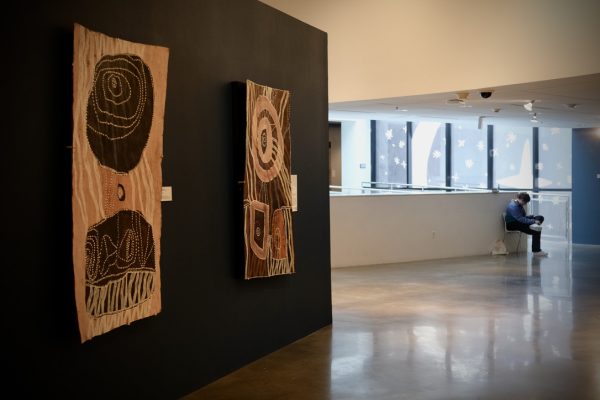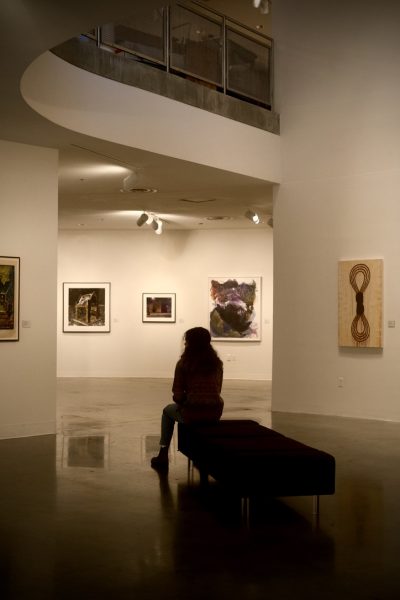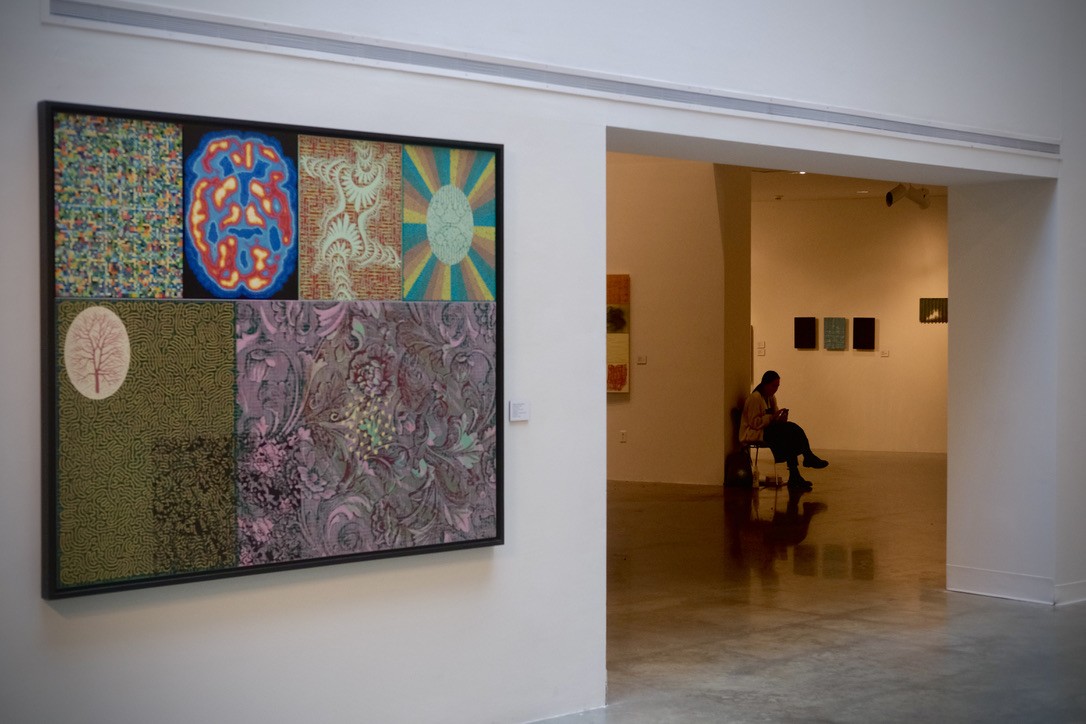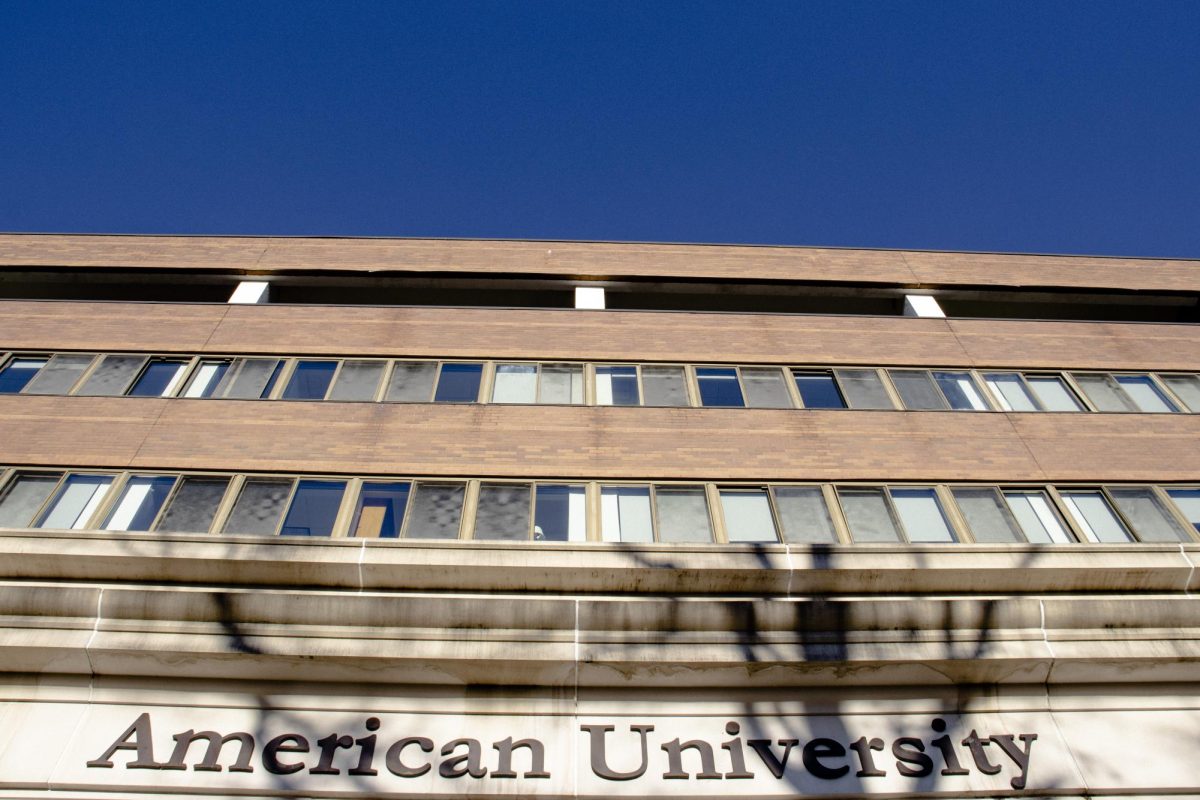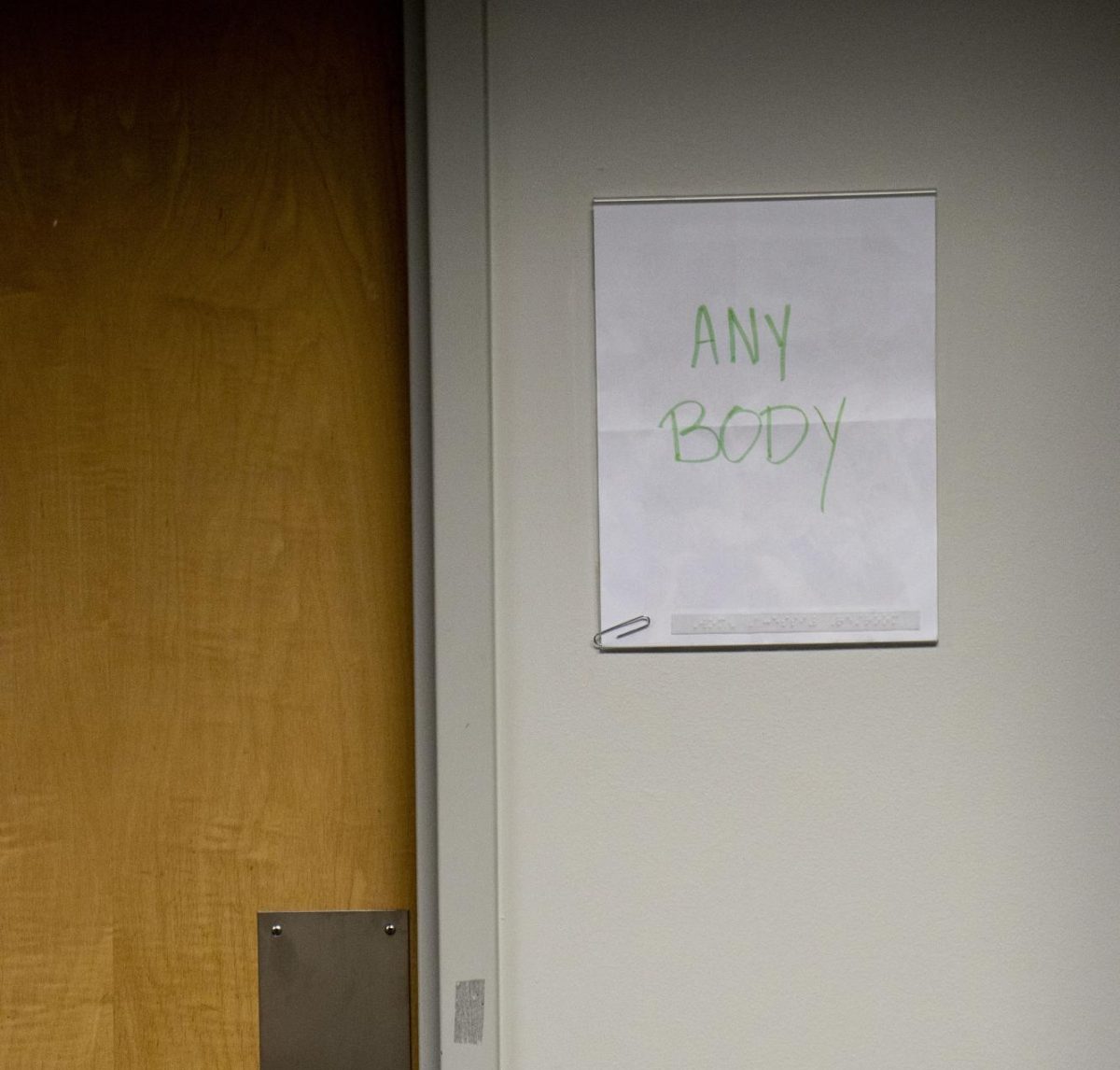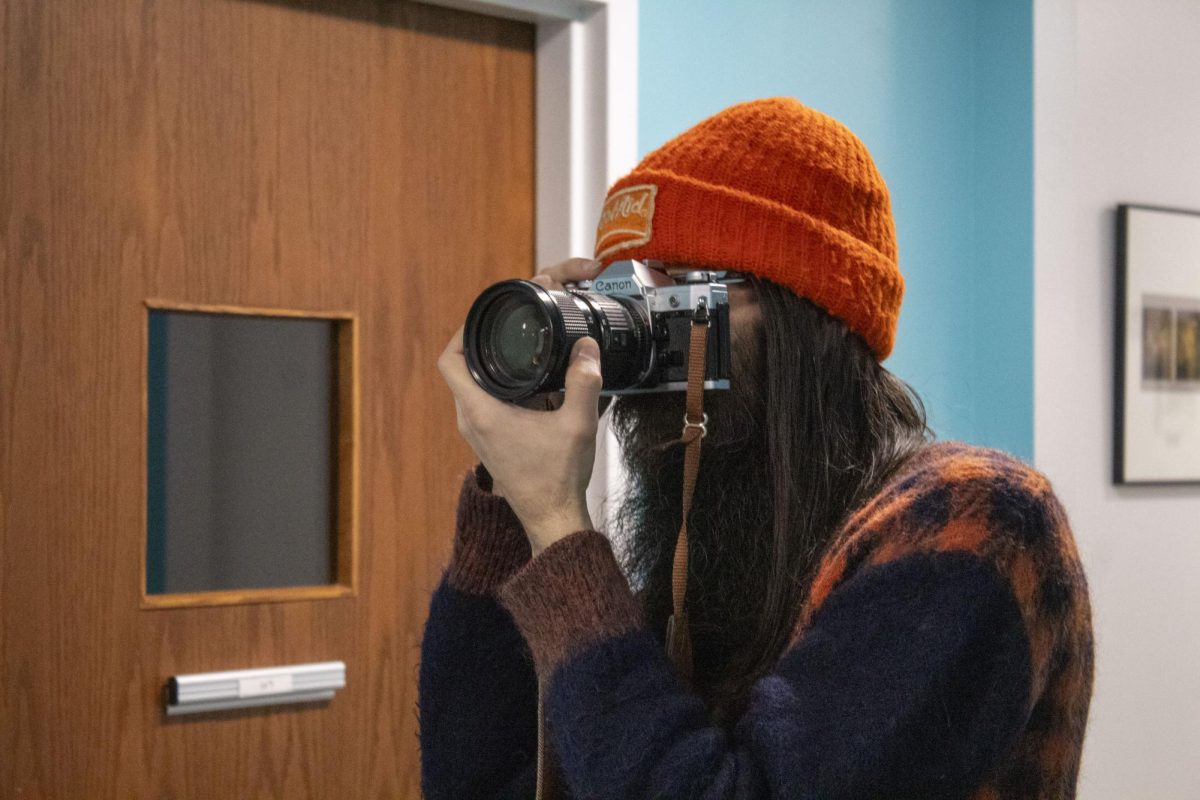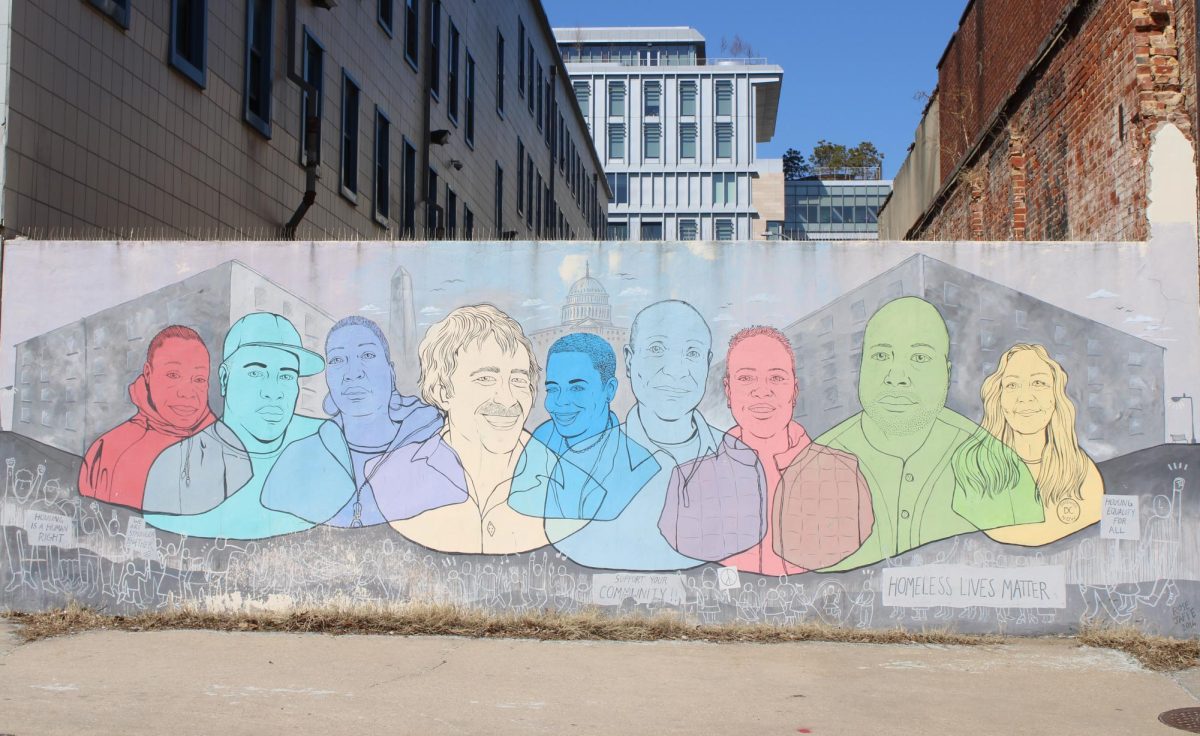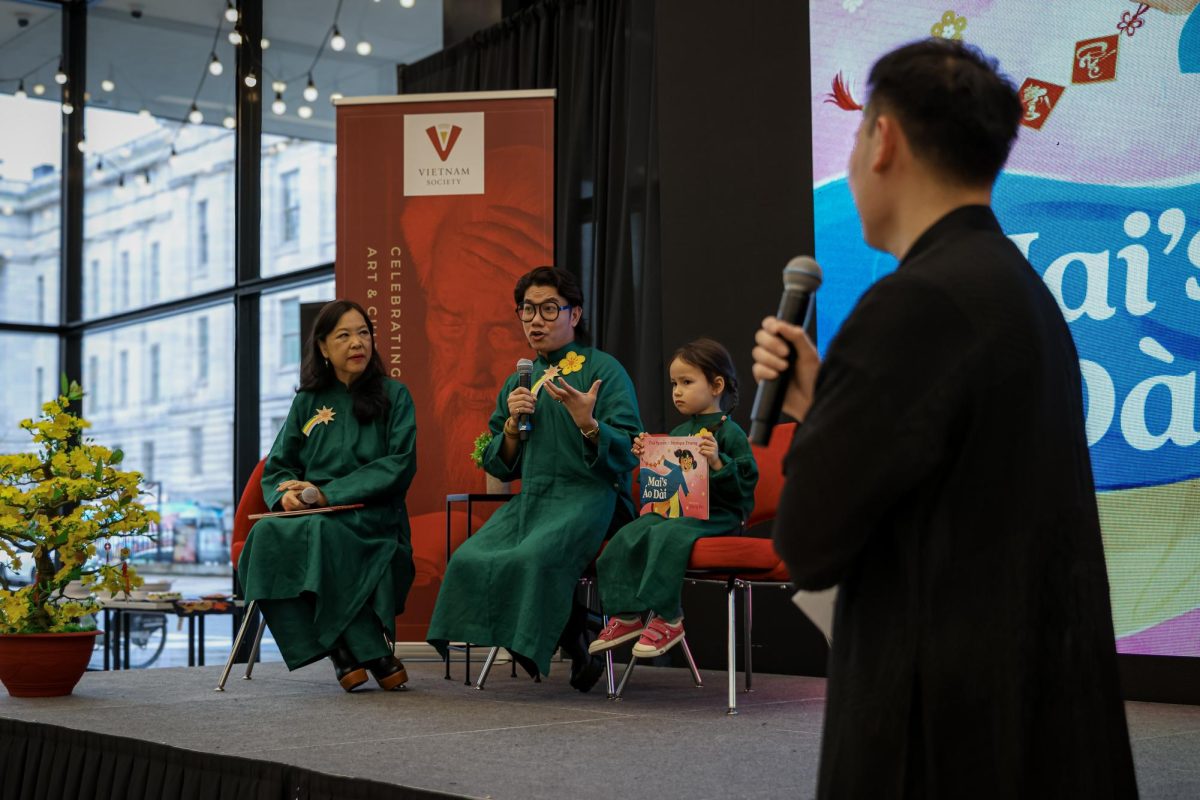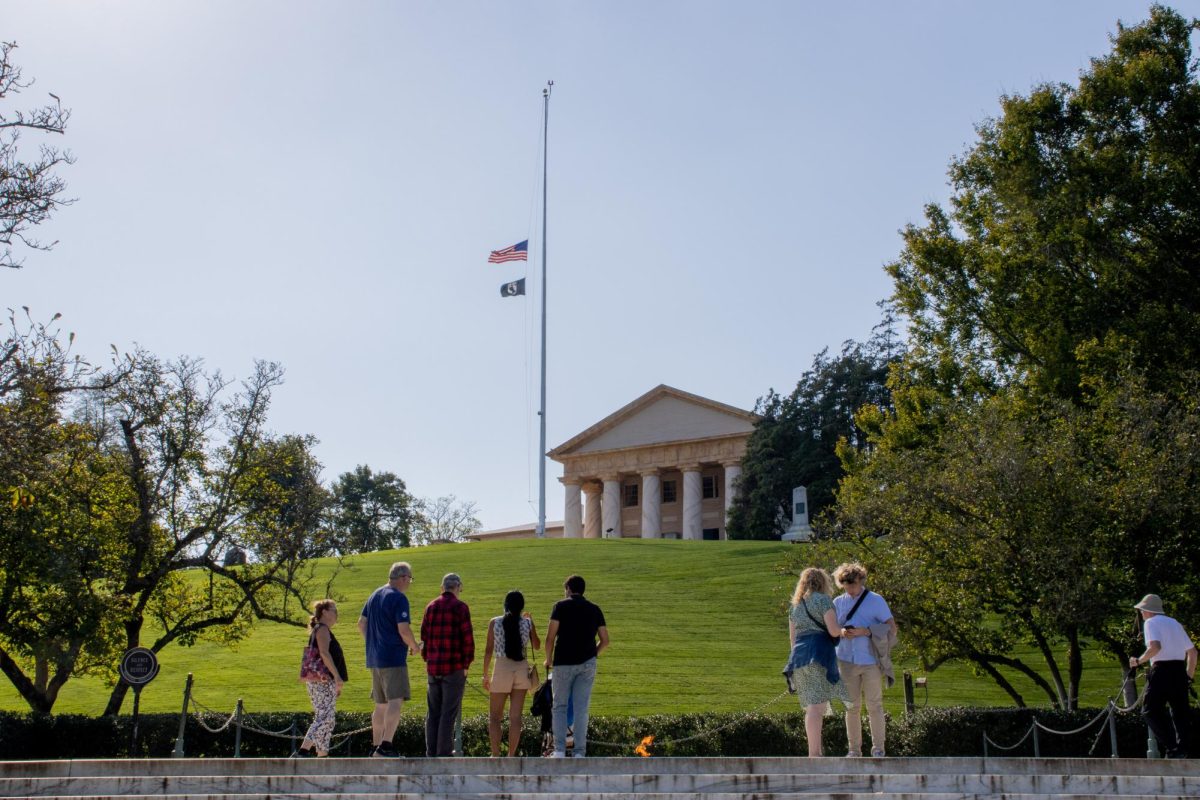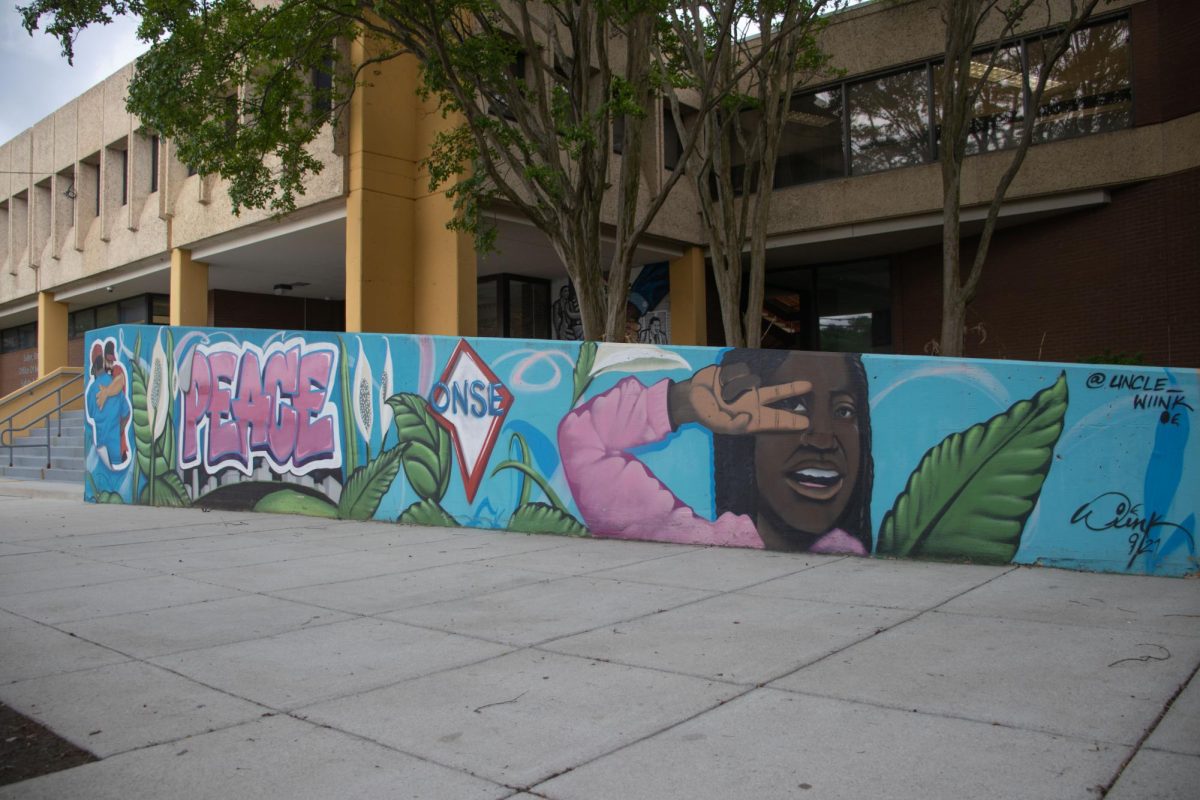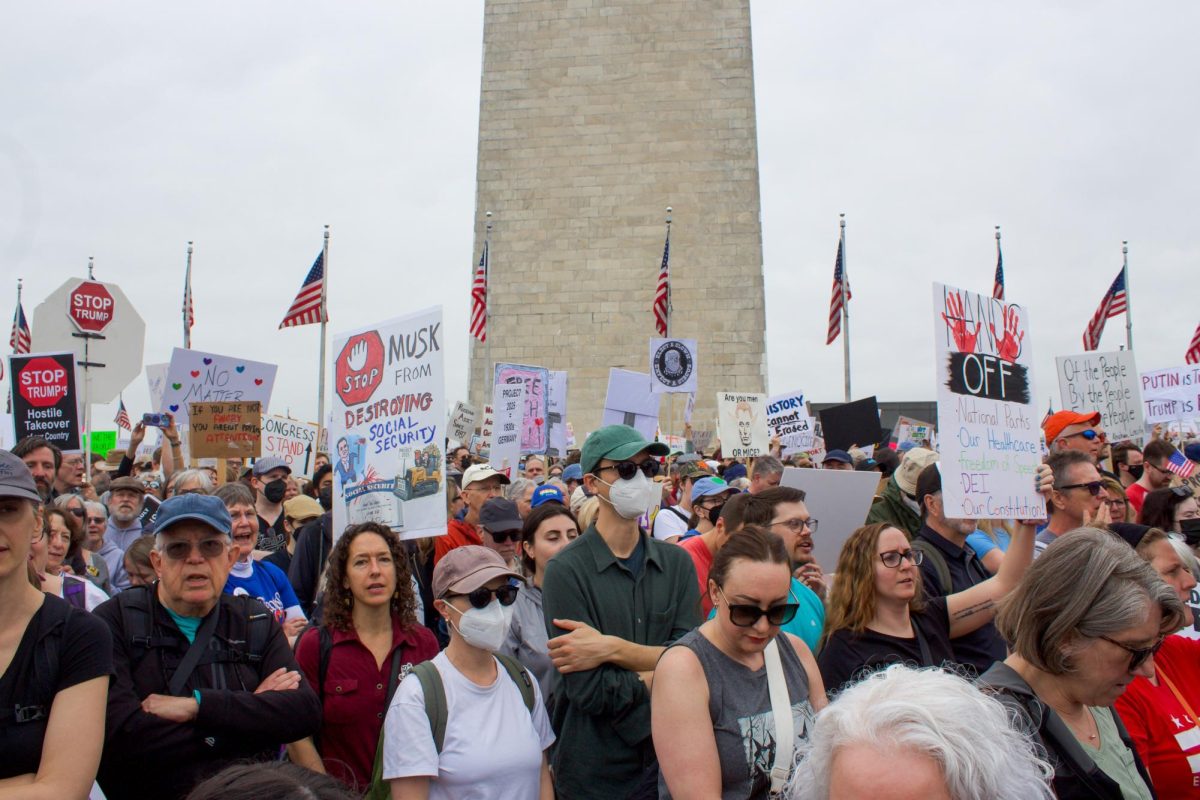The American University Museum’s spring exhibit, located at the Katzen Arts Center, attracted students during the Spring 2023 semester with a variety of nontraditional art.
Each museum floor focuses on a different exhibit. The first floor displays photography from Gail Rebhan and a collection from artists across the District. The second floor includes art from the winners of the Tarwick Prize, which has honored artists from the metropolitan area for 20 years. The third floor is a collection of Aboriginal Australian art.
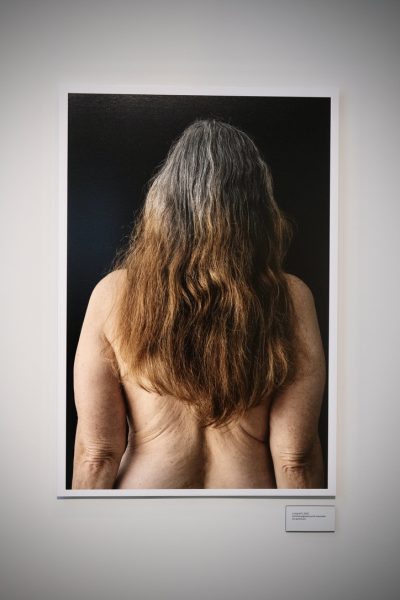

The exhibition’s focus on different art forms reflects the museum’s mission to highlight international, political and local art, according to the Director and Curator of the AU Museum Jack Rasmussen. He said the museum’s mission is derived from AU’s commitment to international relations and politics.
“The mission of the museum is basically the idea that we are interested in international contemporary art because we have a strong School of International Service,” Rasmussen said. “We also show politically and socially engaged art.”
The museum’s mission guides the exhibits’ planning, which Rasmussen said begins two years in advance. The process begins with an idea from an artist or curator. Then, the museum will connect a curator and an artist to start working on an exhibit. Rasmussen said the museum connects with international curators, finds contemporary political art and supports D.C. artists.
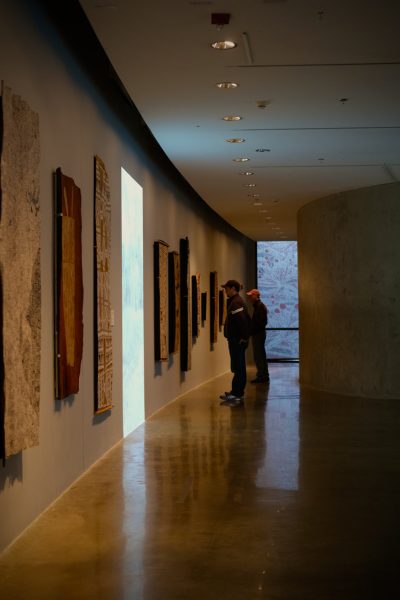
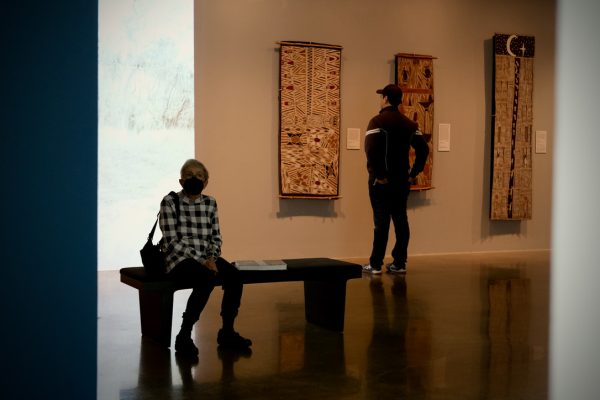
Linh Duong is a first-year student at AU majoring in International Studies but has taken AU art classes. She said the spring exhibit’s unique art showed her that not all art needs to be in traditional styles.
“As an art student myself, I always have a huge imagination, but I feel like a lot of the art teachers dismissed it and taught us to abide by traditional forms of art,” Duong said. “Seeing this exhibition really proved that it is possible to think bigger and make those imaginations come to life.”
Duong said she attended the fall exhibition last semester as well as the new spring exhibition. The variety in pieces, from the Indigenous and Asian artists to the canvas size in this semester’s exhibits, was something she had not seen much before.
“I think this exhibition really pushed me out of my comfort zone to think more broadly,” Duong said.
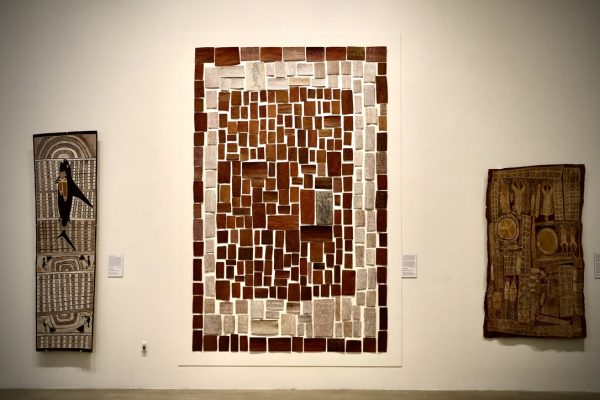
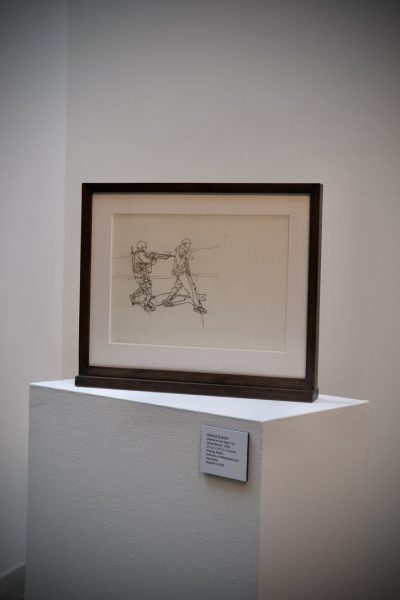
When AU built the Katzen Art Center 18 years ago, it designed the building to be the face of the university and serve the sur- rounding community, Rasmussen said. Now, Rasmussen said the museum is trying to shift its efforts toward the campus to engage with students and professors.
Despite wanting to have events to involve people on campus, the museum has also struggled to work with students, Rasmussen said.
“The biggest, most significant change has been a shift towards the campus,” Rasmussen said. “And, for some reason, it’s very, very, challenging to involve the campus.”
Rasmussen said the museum involves student artists by getting students to host their own events and installations.
“We really, really, want to involve the students,” Rasmussen said.
